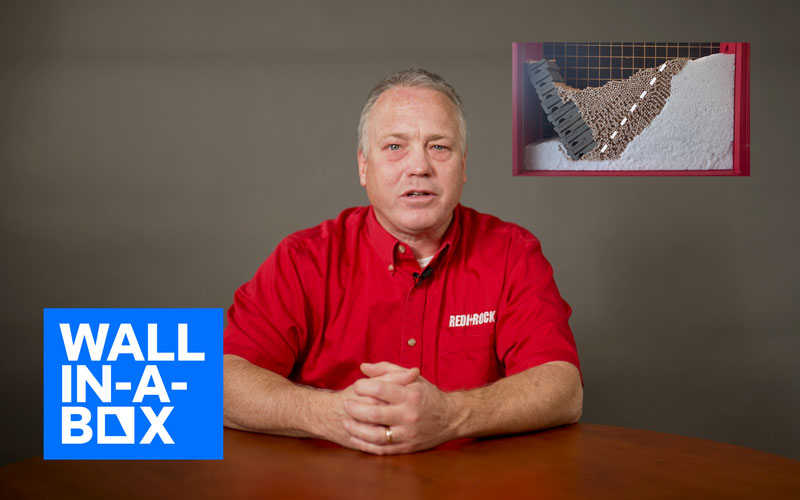Wall-In-A-Box: Concepts of a Select Backfill Wedge
Discussed in this Video
Short on time? Here are this video’s key takeaways…
Soil strength directly impacts wall design. Engineers often improve performance by replacing weaker native soils with stronger materials like gravel or crushed stone, using the select backfill wedge approach.
The select backfill wedge concept helps control failure planes. By removing and replacing soil behind the wall in a wedge shape, engineers can ensure the weaker soil doesn’t influence wall performance or the foundation soil.
The Wall-In-A-Box visualization tool reinforces the select backfill wedge concept. It shows how different soils affect wall stability and illustrates failure through sliding or overturning, depending on soil conditions and wall height in a structural retaining wall.
Understanding how soil pressure affects retaining wall engineering is essential, especially when working with poor site soils. While engineers typically prefer sands and gravels (which have higher friction angles), most projects don’t offer that luxury. Instead, we must work with what’s on site, using soil tests and geotechnical principles to guide retaining wall design.
The select backfill wedge approach is one practical, proven method for improving wall structure performance. This involves removing a wedge of low-strength foundation soil behind the wall and replacing it with higher-friction material like crushed stone or gravel. This reduces lateral pressure on the wall and improves overall stability in concrete retaining wall applications.
In this episode, Jamie Johnson, PE, Redi-Rock’s Director of Innovation, uses the Wall-In-A-Box visualization tool to demonstrate how a select backfill wedge impacts different wall system scenarios. Key takeaways include:
- Soil friction angle matters. Soils like sand and gravel resist shearing forces better than silts and clay, directly affecting how well the wall retains soil.
- Failure planes can be controlled. Replacing weak soils near the wall helps shift potential failure zones farther away, critical for reliable wall engineering.
- Better backfill improves wall performance. Strategic soil replacement can prevent sliding, overturning, or other failure modes, especially in tall concrete block walls.
When designing a retaining wall project, remember:
- Always gather reliable soil data through proper testing.
- Consider all potential failure modes, including global stability at the interface between native soil and select backfill, especially on a natural slope.
- Design for long-term performance, not just short-term stability.
With thoughtful planning and geotechnical insight, you can design lasting structural retaining walls.
Download the Precast Modular Block Design Manual Get the engineering insights to confidently design retaining walls using select backfill wedges and other geotechnical strategies. Access the Precast Modular Block Design Manual Vol. 1, or contact our civil engineering team at (866) 222-8400 (Option 2), or engineering@redi-rock.com.

Contributing Expert
Jamie Johnson, PE
Jamie possesses more than 30 years of design experience in civil engineering. He began as a consulting engineer working for a small civil engineering and surveying firm in northern Michigan. Jamie joined Redi-Rock International in 2006 where he held multiple roles including staff engineer, chief engineer, and director of operations. He is currently director of innovation for Redi-Rock’s parent company, Aster Brands. Jamie holds Bachelor and Master of Science Degrees in Civil Engineering from Virginia Tech University and is a registered professional engineer in the state of Michigan.
While experiencing his mid-life crisis a few years ago, Jamie purchased an E flat tuba. He has survived the crisis and has since added a B flat tuba and a Baritone to the collection that also includes his original tenor and alto trombones. It goes without saying that he likes to toot his own horn.


